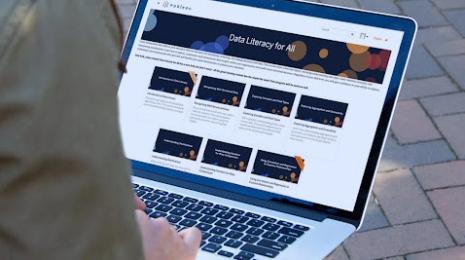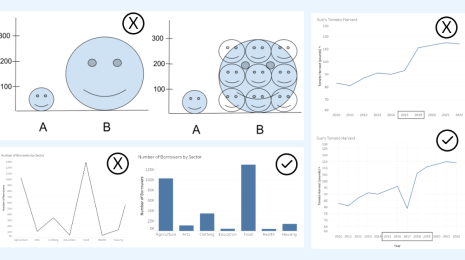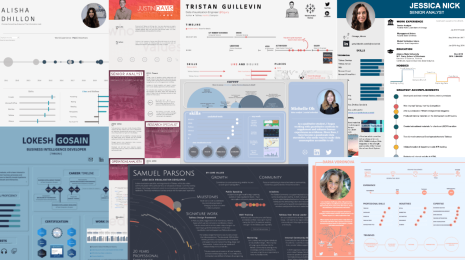The importance of data storytelling in the next decade of data
Learn more on importance of data storytelling in the next decade of data.
Editor's note: This article was originally published on Information Age.

Data storytelling is a skill that has been around for decades. From Hans Rosling’s TED talks, to Cole Knafflic’s best-selling books, people have been rethinking how to use narrative structures to communicate data insights. The recommendations are simple and smart, and should be widely applied.
Good data storytelling is even more important today. Clearly conveying the meaning of data has never been more key than during the Covid-19 crisis. As we demand answers and assessments of the pandemic’s threats, the public have relied on people who can communicate both findings and uncertainties in understandable ways. Great data storytellers have demystified complex concepts such as exponential curves and logarithmic axes. The media have been adept at turning data into stories about trends and movements and the impacts of changing lockdowns. More recently we have moved from data about the disease to the impacts on our economy.
If data-driven responses to protecting public health and repairing our economies are putting data storytelling into the spotlight, how might this discipline evolve over the next handful of years and become more powerful and personalised? Covid-19 provides an opportunity to examine and rethink how we present, share and communicate data in our own work.
You and your colleagues share data in meetings or presentations all the time. What lessons can we take from the media’s analysis of Covid-19 into our virtual meetings?
Visualising your story through data
There is no faster way to lose audience engagement than by not presenting your data in way that can be understood by everyone in the room. Working remotely has exacerbated this challenge: screen fatigue means you have to be even more careful when crafting your communications.
Engaging tactics like ‘progressive reveals’ can help draw your audience’s attention to a data story. Imagine this process:
- First, show and explain a single axis.
- Then add one data point, explaining what it means.
- Next, reveal more data points.
- Then, add colour to show different categories.
- Finally, consider adding animation to show change over time.
It’s like zooming out from a low level of detail to seeing the whole image. This highly engaging process adds one piece at a time, resulting in an audience that understands a chart. Don’t bamboozle them with the whole thing in one go.
Instead of presenting a singular conclusion, data storytelling methods should be about encouraging a wider and more open conversation about what the data insights are saying. Ask your audience to join in on the conversation; invite them to ask questions, critique and add in their point of view. The “Slow Reveal” work of school teacher Jenna Laib shows an approach adults should adopt. Data storytelling should generate conversations, not just a passive virtual shrug.
Converting analytics into insights
Modern self-service analytics and BI tools do not turn people into data storytellers. Rather, education and a new approach to promoting a data culture within organisations are needed. From the top down, more times than not, key stakeholders don’t fully understand the potential power of data storytelling and more importantly, what it can and can’t do. There is a common thought that data equals fact. Instead, there should be a mind shift towards data as a source of information and insight from which opinions are made.
Data storytelling should be part of the culture of an organisation. People can’t convert findings into valuable insights unless they understand the skills needed for communicating with data or in short, how to tell a story. If a data insight isn’t understood and isn’t compelling, it dies on the spot and no one will act on it. Why bother investing in tools and technology if you can’t use the insights to drive change?
There is not enough investment in the kind of training that encourages exploration and questioning of data. Training that does exist focuses on tools, not on how to share insight, interpret charts or make data-informed decisions. More effort needs to be put into considering how to build a data culture that encourages answers to a series of fruitful questions about data in society and business.
Speaking the language of data
We use data to find and share insights to persuade, inform and drive change. If we don’t do that effectively, what was the purpose of the investment in your analytics platform? Having a full stack of data collection, storage, processing, and analysis is of no use if you and your employees do not know how to use that data to have conversations or to make decisions. Data storytelling turns data from neutral fields in a database into opinions, arguments and insights.
Only by elevating data culture and educating on digital literacy across the board will we enable individuals to do more engaging and meaningful data storytelling, and in turn, to get a better return on your investment.
Historias relacionadas
Suscribirse a nuestro blog
Obtenga las últimas actualizaciones de Tableau en su bandeja de entrada.








